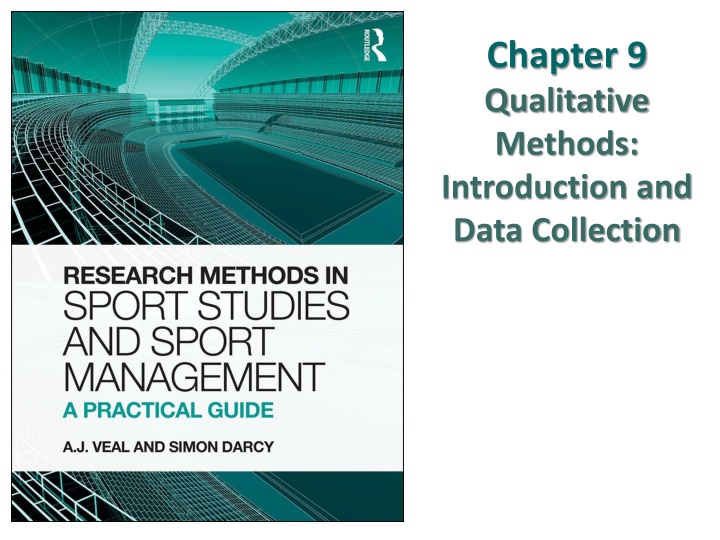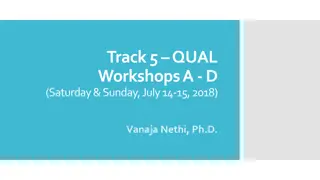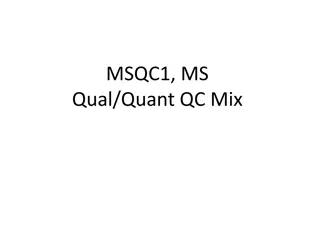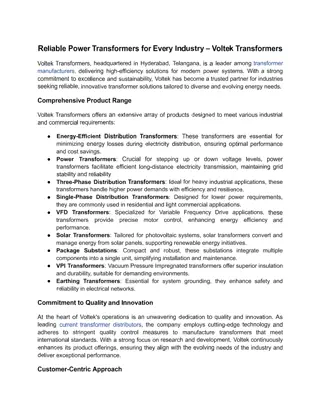
Qualitative Methods in Sport Research
Explore the nature, merits, and applications of qualitative research methods in the field of sport studies and management. Learn about data collection, analysis processes, and the advantages of using qualitative approaches to delve into the intricacies of sport experiences. Discover how qualitative methods offer rich insights and valuable perspectives for market research and understanding human behavior in sports settings.
Download Presentation

Please find below an Image/Link to download the presentation.
The content on the website is provided AS IS for your information and personal use only. It may not be sold, licensed, or shared on other websites without obtaining consent from the author. If you encounter any issues during the download, it is possible that the publisher has removed the file from their server.
You are allowed to download the files provided on this website for personal or commercial use, subject to the condition that they are used lawfully. All files are the property of their respective owners.
The content on the website is provided AS IS for your information and personal use only. It may not be sold, licensed, or shared on other websites without obtaining consent from the author.
E N D
Presentation Transcript
Chapter 9 Qualitative Methods: Introduction and Data Collection
CONTENTS Introduction: nature, history and development Merits, functions, limitations The qualitative research process The range of methods introduction Validity and reliability
Data collection/analysis Typically, in qualitative methods, data collection and analysis are intermingled Although Research Methods for Sport Studies and Sport Management has separate chapters on data collection (Ch. 9) and data analysis (Ch. 15), this relationship is recognised. A. J. Veal & S. Darcy (2014) Research Methods for Sport Studies and Sport Management: A practical guide. London: Routledge
Nature of qualitative methods Qualitative methods deal with: words (+, sometimes, images, sounds) generally a great deal of information about relatively few cases/subjects, sometimes called rich or thick data Reason for use: pragmatic: eg. nature of the data, small number of available subjects theoretical: subjects speak for themselves A. J. Veal & S. Darcy (2014) Research Methods for Sport Studies and Sport Management: A practical guide. London: Routledge
Merits Correspond to the qualitative nature of sport experiences. Brings people into sport research and studies them in the round (Maguire). Results understandable to people not statistically trained. Able to encompass personal change over time. Suited to investigating face-to-face interaction between people (symbols, gestures, etc.). Suited to providing an understanding of people's needs and aspirations. A. J. Veal & S. Darcy (2014) Research Methods for Sport Studies and Sport Management: A practical guide. London: Routledge
Use in market research (Peterson) developing hypotheses on behaviour and attitudes; identifying the full range of issues/views/attitudes to be pursued in larger-scale research; suggesting methods for quantitative enquiry; identifying appropriate language to use in surveys; understanding buying decision-making process; developing new product/service/marketing strategy ideas free play of attitudes/opinions a rich source of ideas for the marketer; providing initial screening of new product/service/ strategy ideas; learning how communications are received by potential customers particularly related to advertising. A. J. Veal & S. Darcy (2014) Research Methods for Sport Studies and Sport Management: A practical guide. London: Routledge
Qualitative methods: Issues (Miles & Huberman) Labour-intensiveness Time-extensiveness Frequent data overload Possibility of researcher bias Time demands of processing/coding data Adequacy of sampling Generalisability Credibility, quality and utility of conclusions A. J. Veal & S. Darcy (2014) Research Methods for Sport Studies and Sport Management: A practical guide. London: Routledge
Qualitative research process (Fig. 9.1) Sequential approach (typical of quant. methods) 1. Hypothesise/ conceptualise/plan 2. Collect data 3. Analyse data 4. Write up results A. J. Veal & S. Darcy (2014) Research Methods for Sport Studies and Sport Management: A practical guide. London: Routledge
Qualitative research process (Fig. 9.1) Sequential approach (typical of quant. methods) Recursive approach (typical of qualitative methods) 1. Hypothesise/ conceptualise/plan 2. Collect data 3. Analyse data 4. Write up results A. J. Veal & S. Darcy (2014) Research Methods for Sport Studies and Sport Management: A practical guide. London: Routledge
Grounded theory (Glaser & Strauss) Theory arises from (qualitative) empirical A. J. Veal & S. Darcy (2014) Research Methods for Sport Studies and Sport Management: A practical guide. London: Routledge
The range of methods of qualitative data collection (Fig. 9.2) Type Features In-depth interviews Checklist rather than questionnaire Usually small number of subjects A. J. Veal & S. Darcy (2014) Research Methods for Sport Studies and Sport Management: A practical guide. London: Routledge
The range of methods of qualitative data collection (Fig. 9.2) Type Features In-depth interviews Checklist rather than questionnaire Usually small number of subjects Focus groups Groups (5-12) with facilitator rather than interviewer A. J. Veal & S. Darcy (2014) Research Methods for Sport Studies and Sport Management: A practical guide. London: Routledge
The range of methods of qualitative data collection (Fig. 9.2) Type Features In-depth interviews Checklist rather than questionnaire Usually small number of subjects Focus groups Groups (5-12) with facilitator rather than interviewer Researcher is participant with subjects Participant observation A. J. Veal & S. Darcy (2014) Research Methods for Sport Studies and Sport Management: A practical guide. London: Routledge
The range of methods of qualitative data collection (Fig. 9.2) Type Features In-depth interviews Checklist rather than questionnaire Usually small number of subjects Focus groups Groups (5-12) with facilitator rather than interviewer Researcher is participant with subjects Participant observation Biographical methods Full or partial life histories A. J. Veal & S. Darcy (2014) Research Methods for Sport Studies and Sport Management: A practical guide. London: Routledge
The range of methods of qualitative data collection (Fig. 9.2) Type Features In-depth interviews Checklist rather than questionnaire Usually small number of subjects Focus groups Groups (5-12) with facilitator rather than interviewer Researcher is participant with subjects Participant observation Biographical methods Full or partial life histories Textual analysis Print and audio-visual material )can also be quantitative A. J. Veal & S. Darcy (2014) Research Methods for Sport Studies and Sport Management: A practical guide. London: Routledge
The range of methods of qualitative data collection (Fig. 9.2) Type Features In-depth interviews Checklist rather than questionnaire Usually small number of subjects Focus groups Groups (5-12) with facilitator rather than interviewer Researcher is participant with subjects Participant observation Biographical methods Full or partial life histories Textual analysis Print and audio-visual material )can also be quantitative Uses a number of the above techniques from anthropology Ethnography A. J. Veal & S. Darcy (2014) Research Methods for Sport Studies and Sport Management: A practical guide. London: Routledge
Context: questions, responses & interview types (Fig. 9.3) Interview type Question format Responses Interviewer/interviewee interaction Pre-coded Formal, consistent Structured Prescribed by questionnaire Prescribed by questionnaire Structured Open- ended Formal, consistent A. J. Veal & S. Darcy (2014) Research Methods for Sport Studies and Sport Management: A practical guide. London: Routledge
Questions, responses & interview types (Fig. 9.3) Interview type Question format Responses Interviewer/interviewee interaction Pre-coded Formal, consistent Structured Prescribed by questionnaire Prescribed by questionnaire Prescribed by questionnaire + supplementary Checklist: question format not prescribed Structured Open- ended Open- ended Formal, consistent Structured + semi-structured elements Semi-structured Mostly formal, consistent Open- ended Conversational, variable A. J. Veal & S. Darcy (2014) Research Methods for Sport Studies and Sport Management: A practical guide. London: Routledge
Questions, responses & interview types (Fig. 9.3) Interview type Question format Responses Interviewer/interviewee interaction Pre-coded Formal, consistent Structured Prescribed by questionnaire Prescribed by questionnaire Prescribed by questionnaire + supplementary Checklist: question format not prescribed Structured Open- ended Open- ended Formal, consistent Structured + semi-structured elements Semi-structured Mostly formal, consistent Open- ended Conversational, variable Unstructured Only the broad topic area is prescribed Open- ended Free-flowing conversational, variable A. J. Veal & S. Darcy (2014) Research Methods for Sport Studies and Sport Management: A practical guide. London: Routledge
In-depth interviews Nature: Length 30 mins to several hours Depth more in-depth than a typical questionnaire-based interview Structure fluid, informal structure Purposes/situations: No. of subjects small Information complex/variable Exploratory/preliminary. Checklist of topics: rather than formal list of questions A. J. Veal & S. Darcy (2014) Research Methods for Sport Studies and Sport Management: A practical guide. London: Routledge
Example of checklist: interview on sport activity (Fig. 9.4, part) CURRENT SPORTS ACTIVITIES HOW OFTEN? WHY? EXPLORE EACH ONE COMPARE WHERE? home/away from home WHO WITH? MEANING/IMPORTANCE TYPE OF INVOLVEMENT ACTIVITIES WOULD LIKE TO DO WHY? MEANING TO YOU OF: FITNESS SPORT A. J. Veal & S. Darcy (2014) Research Methods for Sport Studies and Sport Management: A practical guide. London: Routledge
In-depth interview: interviewing process Standardised approach: question format same for all subjects minimal unscripted interaction Informal/unstructured approach Free-form, conversational Substantial interaction A. J. Veal & S. Darcy (2014) Research Methods for Sport Studies and Sport Management: A practical guide. London: Routledge
In-depth interview: interviewer interventions (Whyte) (Fig. 9.5) 1. Uh-huh Non-verbal response - indicates that the interviewer is still listening/ interested. Encourages the subject to keep talking/expand on the current topic. Repeating last statement as a question - e.g. 'So you don't like sport?' Invites explanations - e.g. 'Why don't you like sport?' 2. That s interesting 3. Reflection 4. Probe 5. Back tracking Recall something said earlier invite further information - e.g. 'Let's go back to what you were saying about your school days'. Initiating a new topic - e.g. 'Can we talk about other leisure activities - what about entertainment?' 6. New topic A. J. Veal & S. Darcy (2014) Research Methods for Sport Studies and Sport Management: A practical guide. London: Routledge
In-depth interview: recording Take notes, during or after the interview? Sound/video recording? Create written version: Transcription: Use of transcription software A. J. Veal & S. Darcy (2014) Research Methods for Sport Studies and Sport Management: A practical guide. London: Routledge
Focus groups Nature: Similar to in-depth interviews but: Conducted with a group (typically 6-12 members). Facilitator (rather than interviewer) guides discussion. Interaction between subjects takes place. Purposes/situations: researching a small group which would not be adequately represented in a general community survey used when the interaction/discussion process itself is of interest eg. testing reactions to a new product; individual in-depth interviews may not be practical to arrange for s but people are willing to be interviewed as a group. A. J. Veal & S. Darcy (2014) Research Methods for Sport Studies and Sport Management: A practical guide. London: Routledge
Focus groups contd Methods: Facilitator has similar role to interviewer Significant difference: need to ensure all group members have their say Recording: as for in-depth interviews A. J. Veal & S. Darcy (2014) Research Methods for Sport Studies and Sport Management: A practical guide. London: Routledge
Participant observation Nature: The researcher becomes a participant in the social process being studied. Examples: Studying a whole community by living there Whyte Street Corner Society Studying a sport facility/club as a user/member. A. J. Veal & S. Darcy (2014) Research Methods for Sport Studies and Sport Management: A practical guide. London: Routledge
Participant observation: issues Gaining admission to/acceptance by a group What role to play: Full identification as researcher? Partial identification? No identification or fake identity? NB Related ethical issues Identification of informants/confidants related to the idea of sampling Practicalities of recording of information A. J. Veal & S. Darcy (2014) Research Methods for Sport Studies and Sport Management: A practical guide. London: Routledge
Analysing texts Research tradition derived from the humanities And theology: hermeneutics Text includes: Books, newspapers, magazines - Pictures Posters Film Internet Examples exist of analysis of: Novels and other literature Mass media coverage of events/issues Film Internet - Recorded music - Television A. J. Veal & S. Darcy (2014) Research Methods for Sport Studies and Sport Management: A practical guide. London: Routledge
Biographical research The study of people s lives Biography/autobiography/personal narrative eg. major figures in a sport Oral history eye-witness accounts of events, lifestyles Memory work Focus group style process using shared written accounts of experiences eg. holidays Personal domain histories Accounts of individual life-time experience of a life- domain, eg. Sports involvement A. J. Veal & S. Darcy (2014) Research Methods for Sport Studies and Sport Management: A practical guide. London: Routledge
Ethnography From the Greek ethnos, people. Not one technique but an approach drawing on a variety of, generally qualitative, techniques. Also: bricollage: mixed methods. A. J. Veal & S. Darcy (2014) Research Methods for Sport Studies and Sport Management: A practical guide. London: Routledge
Validity, reliability and trustworthiness As discussed in Ch. 2: Validity: extent to which the research represents what is intended Reliability: extent to which research is replicable Internal validity: data gathering process: qualitative research validity likely to be high External validity: applicability beyond the research subjects: typically no general applicability is claimed, but some wider applicability can be expected A. J. Veal & S. Darcy (2014) Research Methods for Sport Studies and Sport Management: A practical guide. London: Routledge
Validity, reliability and trustworthiness contd Replication Often not possible in qualitative research, but like meta- analysis, cumulative evidence from similar studies may be used. Trustworthiness term used for qualitative research to cover validity and reliability A. J. Veal & S. Darcy (2014) Research Methods for Sport Studies and Sport Management: A practical guide. London: Routledge A. J. Veal & S. Darcy (2014) Research Methods for Sport Studies and Sport Management: A practical guide. London: Routledge









